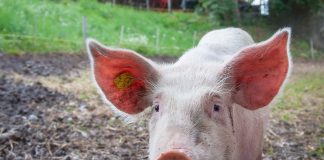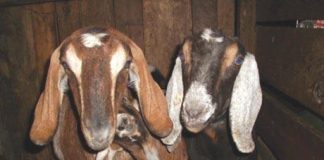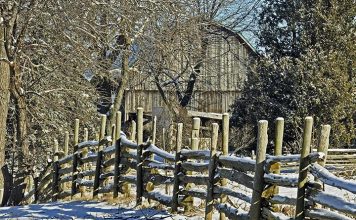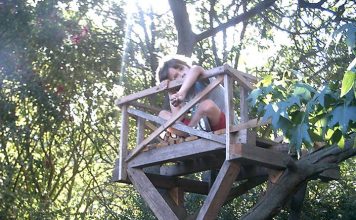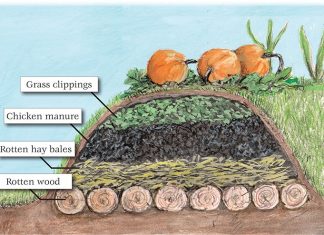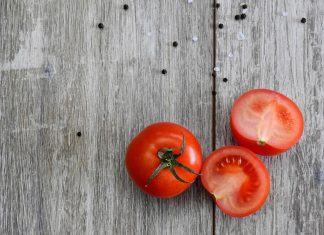By John Moody
In my youth, I remember my dad dragging my brother and me out of bed in the middle of the night, tossing our tired bodies in the back of his hitched-up pickup truck, and having us fishing out on Lake Erie by the break of dawn. Come fall and winter, we found ourselves bundled up out in the middle of nowhere, hunting turkeys and deer with my dad. Although we lived in the city, my dad’s heart was in the country. Hunting and fishing are in our family’s blood.
For many years, life separated me from such pursuits. When my oldest son, Caleb, reached around seven years old, he started to show a keen interest in trapping and hunting. He made makeshift bows, slings, and other weapons, vainly chasing squirrels and rabbits across the yard. I don’t think he ever hit a moving target with his makeshift weapons, save perhaps his siblings.
So I started teaching him how to trap (in order to protect our livestock, especially the chickens). He even made a few of his own traps and once caught a young possum by hand! But he wanted the big prize: a buck.
So I promised him that this year we would hunt deer together. Hunting is a big task for a young boy, and it requires a lot of preparation.
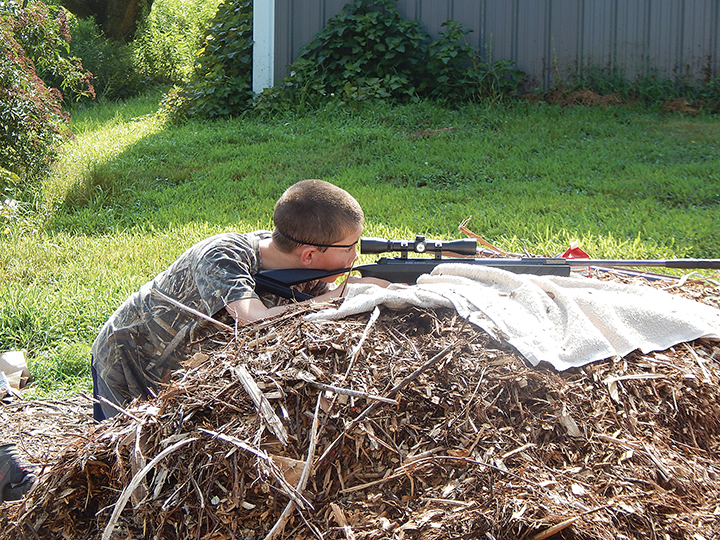
You can’t give what you don’t have
First and foremost, you can’t teach something that you haven’t learned. Around 15 years had passed since I shot firearms. But when we bought our homestead in 2009, we needed to start including firearms in our daily lives. I decided it was important to make sure my skills were sufficient to safely use various firearms and to instruct my family how to do so as well. Don’t assume just because you did something as a kid that you can just pick it right back up. Skills with firearms are like stored food — perishable.
So I took a basic handgun class. In our area and on our homestead, a handgun is far easier to carry than a shotgun or long rifle, especially when doing chores like walking fence lines or clearing of brush and debris. Given the number of predators I could possibly run into (we have large wild dogs, bobcats, coyotes, and bear), it made sense to do my training starting with this particular type of firearm.
After that class, I joined our local range, where I try to participate regularly. This helps me and our various firearms to stay rust-free and in working order. It also gets me to shoot a wider variety of weapons than if I was just doing so solo on occasion. Making friends over firearms is a time-honored country tradition and a great way to meet other people in your community.
Working your way through the world of rifles
Before you can hunt, you have to be able to shoot. For my son, I needed to start off by teaching him basic marksmanship. Every time we go to shoot any type of rifle, we begin by reviewing the rules of firearm safety. I also ask him what they mean — rote repetition is a dangerous thing. We also go over proper handling each time. When you remove a firearm from the gun cabinet, the first thing you check is the status of the safety (if applicable) and the condition of the firearm (loaded or unloaded), along with a visible inspection for any damage or anything else that seems out of sorts. Good habits are hard to break, but so are bad ones. From the moment the gun comes out of the safe, I ingrain proper firearm handling in my kids.
One of the great things about modern firearms is the ability to start a child on smaller, less costly, and safer platforms until they are ready for the big guns. For us, we have a graduated system we can work the kids through until they are ready for a true hunting rifle. I started building this collection many years ago, before my kids were even dreaming about deer hunting. Rifles make better Christmas gifts than the rampant imported plastic crap most kids get showered with these days, even if it is a few years until a child can use them.
The pellet rifle:
The first stage of training is the pellet rifle. These are not your granddaddy’s toys! Good ones fire at over 1000 feet per second (fps) and come with all sorts of specialized ammo, including hollow point. These rifles aren’t just for practicing basic skills, either. They are very good for dealing with all sorts of small-sized pests — you can put down rabbits, squirrels, and even smaller raccoons and opossums with the right pellet rifle and round. This is important, since we try to only buy things that serve multiple purposes on the homestead. Single-use, speciality equipment has no place on our homestead.
While they have great velocity, the low weight of the rounds helps ensure that they don’t travel far if for some reason one goes astray. The ammo is also cheap. How cheap? Just check out the chart above comparing base costs and ammo costs for the firearms we keep on hand. The biggest drawback to pellet rifles is the upper body strength they require to make ready. For a 10-year-old, the upper body strength necessary to re-cock the spring is a fitting milestone to earn the right to hunt that fall. For our younger kids, it becomes a dad duty in-between shots — my seven-year-old struggles mightily with that spring. The pellet rifle also has more recoil than our next favorite rifle — the .22. This teaches kids to care about proper position and grip when they are behind the scope and lets them learn the danger of taking a scope to the eye socket on a much lower recoil than a hunting rifle.
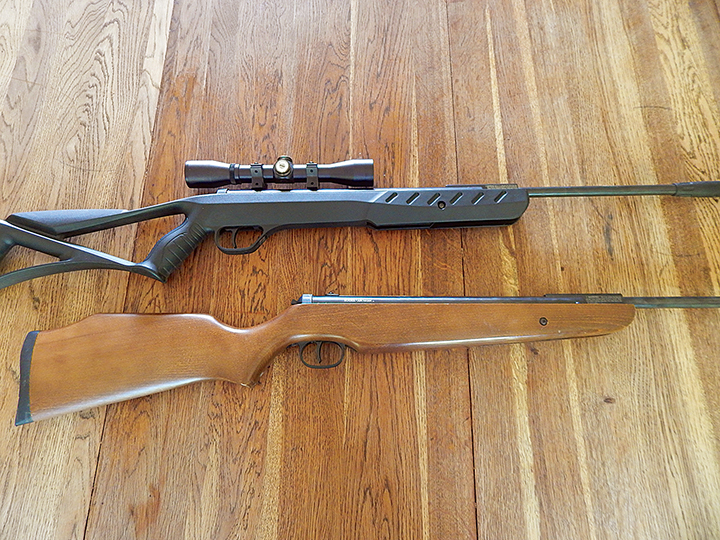
The .22 rifle:
The second stage of our shooting school is the .22. It introduces them to the “bang” that real bullets make.
The .22 is great for all sorts of reasons — both the rifle and the ammo are inexpensive. If you are lucky, you can sometimes snag rounds for as low as three or four cents each. It will take care of all the pests mentioned above and, if you are a good shot, much larger ones as well. A number of years ago, a large wild dog was attacking our chicken flock. He was easily around 150 pounds. A single, well-placed shot from the .22 ended his chicken-killing antics.
You really can’t have too much .22 ammo. If you store it right, it will rarely go bad. So we buy in bulk. You can get a bit over 5,000 rounds of .22 ammo for a slightly north of $200 right now. I have often traded smaller boxes of 500 rounds for some chickens or some kind of work around the homestead. We think of extra ammo as a hedge against inflation and a good investment.
The Mosin-Nagant rifle:
After the .22, we move on to the classic — the Mosin-Nagant. The beauty of the Mosin? From what I have heard (I can’t vouch for this personally), there isn’t an animal in America that a properly-loaded Mosin can’t take down. For a rifle that you can get for around $100, that isn’t bad at all. Even better, the ammo is inexpensive for something with such power and versatility. Years ago, we picked up a few (thousand) rounds in the original Russian spam cans. They have increased in price some, but not too much. Once you hit a Mosin, you are hitting a real shooting expense. Every two to three rounds down range is about a dollar. For a family of seven shooting 30 rounds each, you are looking at almost $100 in an hour or so of shooting. You can see why we spend most of our practice and teaching time on the pellet and .22 platforms.
The hunting rifle:
Last but not least, I introduce the hunting rifle. The sky’s the limit with what people will spend on their rifle setups. I have seen city folk come out to our farm to hunt toting 200x the value of the deer they hope to bag in equipment, accessories, and other unnecessary stuff. I should’ve charged them more for the experience I guess, but we are so overpopulated that the help with four-legged pest control at the time struck me as sufficient compensation.
For this season, we plan to try out a few rifles from our neighbors and then purchase one come spring for next year. If you are unsure what rifle will work best for you or your child, trying out a few is a great way to help hone in on a winner. If you don’t have neighbors to share with, try finding your local shooting range, gun club, or similar organization. In our area, everyone enjoys the opportunity to put a few rounds down range with alternate firearms, so sharing is the norm and is all part of the community experience.

Don’t forget your safety gear
Here, we also introduce our kids to our friends, what my firearms school affectionately referred to as “ears and eyes.” Now, I like my wife and kids, so I want to hear their voices until the day I am taken to heaven. You may have a different opinion on that matter, but I still recommend you invest in eye protection and hearing protection. Again, we don’t want expensive, single-use stuff sitting uselessly around the homestead. The ear protection I wear for running the riding lawn mower and chainsaws is the same ear protection I wear when shooting. The safety glasses the kids wear when we are doing certain work around the farm are the same they bring when we hit the range or the neighbor’s afternoon shootouts. Exposure to loud noises and the stress it places on the ears is cumulative, so it is especially important to teach kids good habits before they suffer irreversible damage.
Teaching marksmanship “old school”-style
Back when I was in high school, I spent a few weeks one summer working at a kids’ camp with a friend supervising the shooting range. Yes, this was the early 1990s, when camps had rifle ranges run by high school juniors and seniors. At the end of those two weeks I could shoot the ring off a soda pop can at 50 yards with iron sights. One of the reasons low-cost ammo is so important is because there is no replacement for putting rounds down range once you have learned proper handling and technique.
Shooting is like any other muscle memory skill. The more you do it properly, the better you will become at it. As hunting season approaches, I will have my son spend at least two days a week putting 25-50 shots down range with either the pellet rifle or the .22. He is free to do more — especially with the pellet rifle — a few vegetable sales is all it takes for him to cover a month’s worth of ammo. One other benefit of the pellet rifle? No need to have a full berm and other safety measures in place as with other firearms. You still need a good, safe backstop, but the rounds don’t have the ballistics to carry too far beyond the intended target.
From personal experience, I would say that fun targets make the best targets. Knocking cans off wooden rails, hanging things on strings, things that go pop, and refilled jugs that go boom — the options are endless with what you can use for target practice without adding any extra expense. I will often save big sheets of cardboard for pistol and rifle practice, drawing targets all over the sheets using a thick-tipped marker. You can make up games, labeling each target and shooting them in various orders. Or you can make a target for each person and see who can shoot each set of circles with the greatest speed and accuracy. My son and I often end up in friendly competition during these games. My hope is that in a few years he will easily beat me. We use empty milk and honey jugs, empty cans, and all sorts of other “shoot it before you recycle it” items to keep training fun and target acquisition varied.
As we get just a month or so out from season, practice will change as we move on to the hunting rifle proper. Steel or similar targets, sighting practice, and more will become the new fun and games at the range. We will practice more precise distances that match our intended shooting spots come fall.
Speaking of shooting spots, we will get those ready a few months before season to lessen the likelihood of the deer getting spooked by our presence and moving farther away.
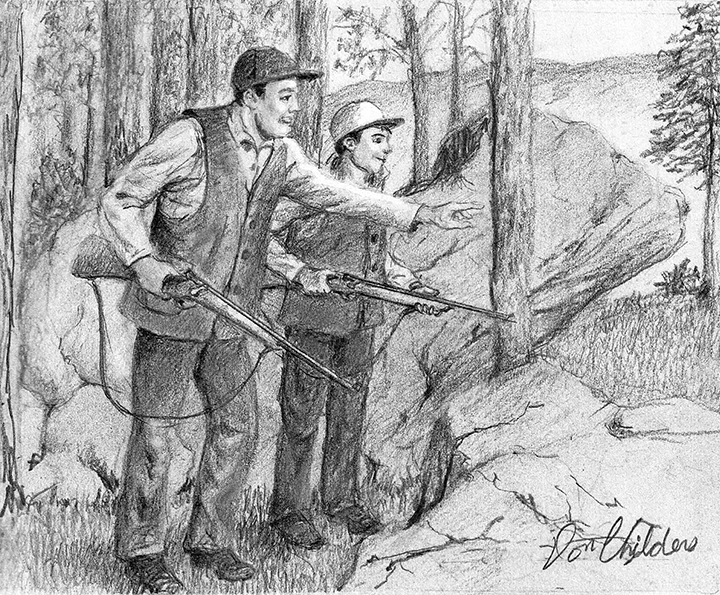
Scopes and accessories
While I love iron sights, for deer hunting we will shoot with a scope. Also, my son will probably shoot with a supported rifle, either from the prone position or perhaps in a raised platform we set up.
Hunting season is now on us, so now that my son is a fairly reliable shot, it is time to teach him the next set of skills in his pursuit of the buck — how to hunt. That is a topic we will tackle in a future article.




